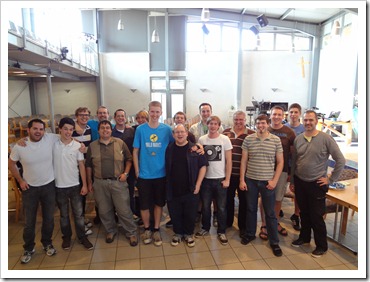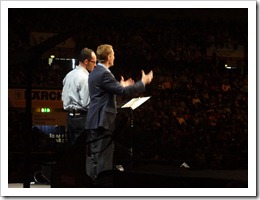I wrote a post on the Willow Creek Association for their blog to church leaders. Even though it is targeted to church leaders, I thought there would be something useful for the tech artists among us.
If you had to define the church tech people you work with, would it be:
a.) Creative. Energetic. Helpful. Indispensable.
b.) Drained. Critical. Grumpy. Anti-social. Resistant.

Technical artists worshiping :)
I don’t need to know your exact situation to know that we all want to work with a church technical artist defined by “option a”. However, I have been to many churches, in many different environments, and I see “option b” all the time. Full time, part time, volunteer, it doesn’t matter. “Option b” is everywhere. What is happening at your church? Chances are, if you dig around a little, you’ll find an unhealthy tech, buried under too much work.
As a leader at your church, not only would you like to thank me for pointing out the obvious, but you are wondering what to do about it. How can I get an “option a” type tech person at my church? Is there a school where they crank these types out? Can I trade in the “option b” I have for a new “a”? Can I poach one from Willow Creek when no one is looking?
I’m a tech person myself, and I can tell you that it is way easier to be an “option b” tech person, than an “option a” one. Unfortunately for your church, “option a” technical artists don’t just happen by themselves. Tech people are unusual and are generally misunderstood at most every church and most of what they do is a mystery to you. Your tech person is pouring themselves out for your church, and nobody fully understands what they do, how they do it, or what they need to keep doing it. It is no wonder that “option b” is so wide spread.
The production team at Willow Creek Community Church understands what is like to be a tech person in the local church, which is why we are hosting our 2nd annual Gurus of Tech conference (FREE) to help equip, train and inspire the “option b” types at your church toward becoming an “option a” technical artist.
There will be skill specific training (FREE), and while that is useful and what most tech people hunger for, we will be focusing most of our attention on the heart condition of tech people everywhere: knowing the difference between excellence and perfection, making your relationship with God more than just your serving time, understanding how production fits into the mission of the whole church. (ALL FREE) Basically moving “option b” towards “option a”.
I would encourage you to send every tech person you have. Check out the website for further information: www.gurusoftech.com (FREE)
What: Gurus of Tech
When: May 22-23
Where: Willow Creek Community Church – Crystal Lake Campus
Cost: FREE
![]() photo credit: Mrs TeePot
photo credit: Mrs TeePot

















